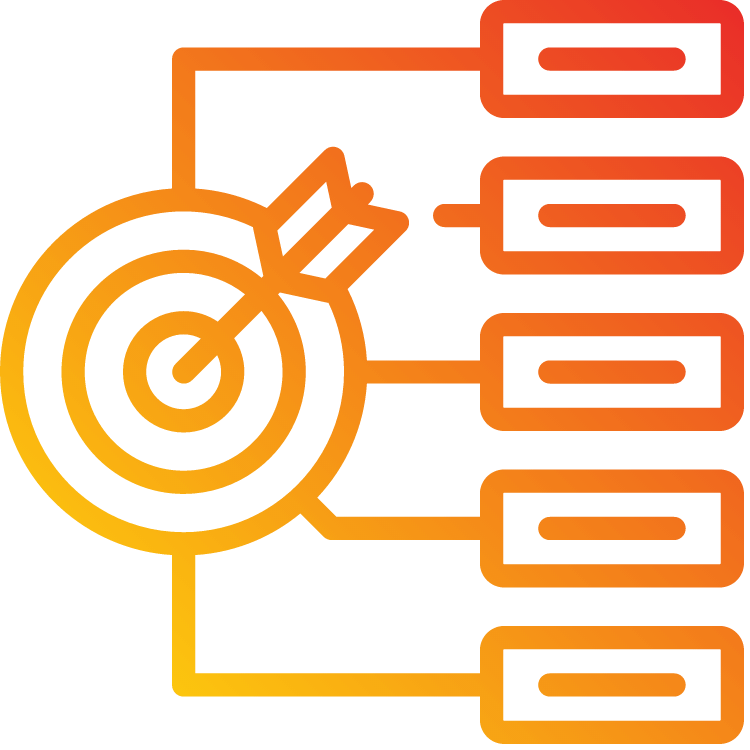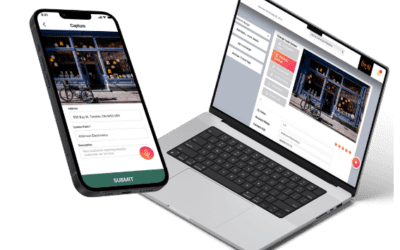Ready to get started?
If you’re looking for a better strategy for selling your products or services that will increase your revenue and shorten your sales cycles, then look no further. In this article, we aim to explain to you what consultative selling is, and why it’s a better sales strategy than product-based or transactional selling.
But before we get into it, let’s take a quick look at what exactly consultative selling is, and why you should add it into your business strategy.
What is Consultative Selling?
Consultative selling is a philosophical sales strategy that is based on building a relationship with your customers, rather than just pitching to them.
Richardson Sales Performance defines consultative selling as, “a sales approach that prioritizes relationships and open dialogue to identify and provide solutions to a customer’s needs. It is hyper-focused on the customer, rather than the product being sold. This technique helps sales professionals better understand the challenges faced by customers so they can position their solutions in a more compelling and effective way.”
When you take a minute to stop pitching and start listening, you are better prepared to assist your clients in the things they need, often being able to predict their pain points before they get around to mentioning them. Asking open-ended questions allows your customers to identify their own pain points and needs, thus leading to a quicker sales cycle. Listening to your customers can give you a holistic approach to selling that has its basis in customizing your products to fit your client’s needs, rather than just selling them a whole suite of products they may not need, which will make them less likely to re-subscribe.

Why Use Consultative Selling Over Product-Based Selling ?
Before we can explain why using consultative selling is better than product-based selling, we have to first define and differentiate the two.
As stated earlier, consultative selling is a sales strategy that focuses on the who, while product-based selling focuses on the what. What we mean by that is someone whose sales strategy includes consultative selling will spend their time getting to know their clients and the ins and outs of their business. Their focus is the relationship that can be built with their customers and customizing a product or service to fit their needs. Consultative sellers focus on talking about the prospect, rather than the product. Their approach is “all about the prospect,” they ask questions to determine whether the prospect actually needs the product, and they’re focused on finding prospects that fit their ideal buyer persona. They try to sell their prospect the next step in the selling process, their pitches tend to revolve around asking probing questions, and when faced with objections, they opt to redirect, rather than overcome. They listen much and speak less.
Product-based selling, on the other hand, is solely focused on selling a product or service. They’re not trying to customize to a client’s needs, and they’re not interested in doing anything other than pitching their products. Product-based sellers talk about the product, not the prospect. They use an “all about me” approach to selling their product. They tend to assume that every potential client needs their service or product, and thus try to sell it to everyone. Product-based sellers focus on selling the whole product at every stage in the sales process, and their pitches tend to be centered around descriptions and explanations. When faced with objections, they try to overcome them. They speak much and listen little.
So which sales strategy is better? Well, while product-based selling may get initial sales, they’re not very likely to stick. When a seller creates a relationship with a customer through consultative selling, it creates greater customer loyalty in that a client is less likely to leave for a competitor. If they feel all of their needs are being met with your product, and that they’re being listened to, heard, and supported by their advisor, they have no reason to search elsewhere for a product or service.
In short, consultative selling is a spirit of service. They have the client’s best interest in mind. Consultative sellers ask clients, “What can I do for you?” Product-based selling is done in the spirit of getting. They have their own self-interest in mind. Product-based sellers ask their clients, “What can I get you to buy from me?”
The Pillars of Consultative Selling – 6 Easy Steps
If you’re looking to boost your sales strategy by switching from product-based selling to consultative selling, we’re here to help you get there. With these six easy steps, you can develop your own winning consultative selling strategy that will not only get you new clients, but retain old ones as well.


1. Prepare/research ahead of time:
Preparing for your calls or meetings and researching your prospect properly can mean the difference between landing sales and never having your phone calls answered.
Before you even dial that phone number, it’s time to go into “detective mode,” says Pipedrive. This is the point in your consultative selling strategy where you put on your Sherlock Holmes deerstalker hat and delve into who exactly your prospect is, and what their company is about. Without this research, you’ll run the risk of a prospect thinking you don’t understand them or their needs. The best place to start is learning the following five things about a prospect.
- The size of their company
- The number of employees they have
- Their annual turnover or average sales size
- What their product or service is and what they offer
- Who their target market is
If you’re able to uncover these five things, you’ll be well on your way to understanding your prospect and their needs. But learning about your prospects isn’t the only way you can prepare for your calls. Practicing active listening is a great way to enhance your consultative selling. Oftentimes, as sellers, you’ll ask a question and then spend the time that your prospect is talking thinking about your next question. So you’re not actively listening to their answers. Being a pro at active listening allows you to hear their problems and ask follow-up questions that are relevant to the conversation at hand. It’ll also let your prospects know that you’re paying attention to them, rather than planning what you’ll say next.
2. Demonstrate thought leadership by backing statements with insights:
Becoming a thought leader isn’t something that’s going to happen overnight. It’s something that the most prominent people known for their thought leadership have spent years honing and perfecting. But you can get yourself on the path to thought leadership by striving to become an expert in your chosen field. Read about it, write about it, attend conferences, listen to podcasts, etc.
Thought leaders are people that others in their line of business look to for knowledge and insight. They are often top sellers in their companies. Even if you haven’t become a thought leader as of yet, you can still demonstrate thought leadership by backing up all your statements with your own insights. This will lead your prospect to believe that you’re as close to an expert in your field as they’re likely to encounter, which in turn leads to trust. When a prospect trusts that you know what you’re talking about, they’re far more likely to listen to you when it comes to solving their problems than they are a competitor. So it’s important that you are able to demonstrate a wealth of knowledge and expertise in your field if you wish to bolster your consultative selling strategy.
3. Align your needs to your client’s needs:
In product-based selling, it’s typically about what you need to do to get the client to purchase your product or service. In consultative selling, it’s about what your client needs, and what you need to do to help them. When you align your needs to your client’s, you’re showing them that you’re not just about the sale. You’re there to help them through the entire process and even after, not just up until they sign a contract. So when your needs are aligned with your client’s or prospect’s, you’re ensuring that until their needs are met, yours won’t be either. This will incentivize you to ensure your client is happy and their needs and requests are being fulfilled.
4. Master the art of situation, problem, implication, and need-payoff questions:
In 1988, consultative selling expert and founder of the Huthwaite Corporation, Neil Rackham, published a book entitled SPIN Selling. This book has gone on to top the New York Times Business Best Sellers list, and was ranked number one on Inc. Magazine’s Top Ten “How To Sell” Books of All Time.
If you’re looking into consultative selling, then it’s a good bet that you’ve likely already heard of SPIN selling. But in case you haven’t, we’ll lay it out for you here. SPIN stands for Situation, Problem, Implication, Need-Payoff. These are types of questions to ask your prospect of client to help give you a greater understanding of their situation, any problems they may be facing, the implications of those problems (i.e., the causes and effects), and the need-payoff of your product (why your product or service is worth it for them).
But let’s go a little further into detail about what these questions are and what they should entail, according to Lucidchart.
- Situation: The goal of these questions is to gather as much information about your client or prospect’s current situation as possible. They should include questions such as what do your client’s current processes look like? What tools are they currently using? And how often do they use those tools?
- Problem: Questions in this category are meant to help you understand any problems your client or prospect may be having and how your product can help solve those problems. These questions should be leading so that they’re identifying their own problems rather than you telling them what their problems are. Questions should include: How cost-prohibitive or time-consuming are the current tools you’re using? What is something you wish your current tool did that it doesn’t now? What specific pain points are you experiencing that your current tool doesn’t address?
- Implication: Implication questions allow you to hone in on a client’s specific problems or pain points and observe the cause and effect of those problems. For example, if you’re selling a problem related to communication, you could ask questions like how much time is wasted on bad communication at your business every week? How much more do you think your employees could achieve with better communication? Have you ever had a delayed product rollout related to insufficient communication?
- Need-payoff: Need-payoff questions are used to drive your prospect to the conclusion that your product will ease their pain points without you directly telling them that. Would a product management tool help to drive employee efficiency? Would it improve stakeholder buy-in? Do you feel that would be valuable to your business or team?
The SPIN Selling strategy is a great way to increase your sales and get a jump on your consultative selling strategy.

5. Focus on solutions rather than features:
When you focus on the solutions to your client or prospect’s pain points, rather than the features of your product or service, you’re showing them that you have their needs in mind. Product-based selling focuses on what the features of your product or service can do for a client, but as a consultative seller, what you want to do is focus on solutions to their problems. Rather than telling a client that your product does X, try asking leading questions about their potential problems and what you think a good solution would be. This will eventually lead the conversation into how your product can help them, but you don’t want that to be the driving factor of the phone call. You want your client to identify that your product is better for their business themselves. Remember, your clients want to be heard, not talked at.
6. Redirecting objections vs overcoming objections:
Another huge difference between product-based selling and consultative selling is how each strategy deals with objections. Product-based selling tends to focus on overcoming objections. They do this by continually making a case for their product and answering questions before the prospect even asks them. This strategy can often be seen as pushy, leaving your prospects feeling unheard. Consultative selling, on the other hand, focuses on redirecting objections. What this means is that you ask new questions to move the conversation in a different direction without even acknowledging the original objection. The goal is to keep the conversation flowing by asking leading questions that will ultimately end with a prospect realizing that your product or service is what their business needs.

Final Thoughts
If you’re looking for a new approach or sales strategy to help boost your company’s sales, consultative selling is a great way to accomplish that. It’s not something that can be learned overnight, however, so don’t feel discouraged if you don’t master consultative selling right away. Keep at it, and employ the six steps we’ve outlined in this article, and soon, you’ll be an expert at consultative selling too.
Other Articles
Enhancing customer satisfaction with a mobile CRM App
Ready to get started?Are you looking for a way to enhance customer satisfaction in your sales process? Mobile CRM (Customer Relationship Management) apps are the perfect tool to help sales reps stay on top of their customer interactions and keep track of customer...
Lead Management Process
Ready to get started?The lead management process is an important part of any business. It is a method that bridges the gap between marketing and sales which increases the chances of turning prospects into customers and ultimately results in more revenue for your...



